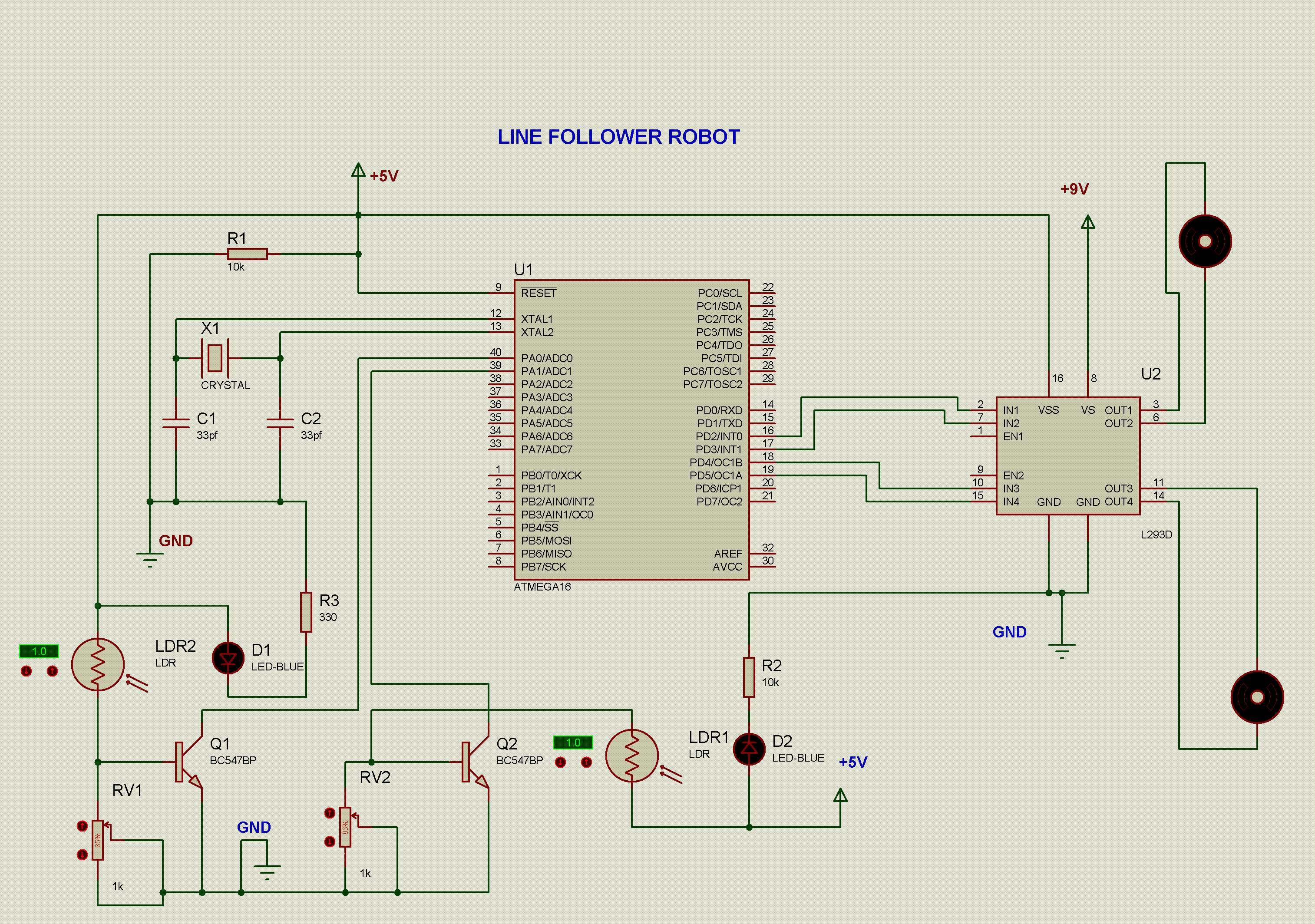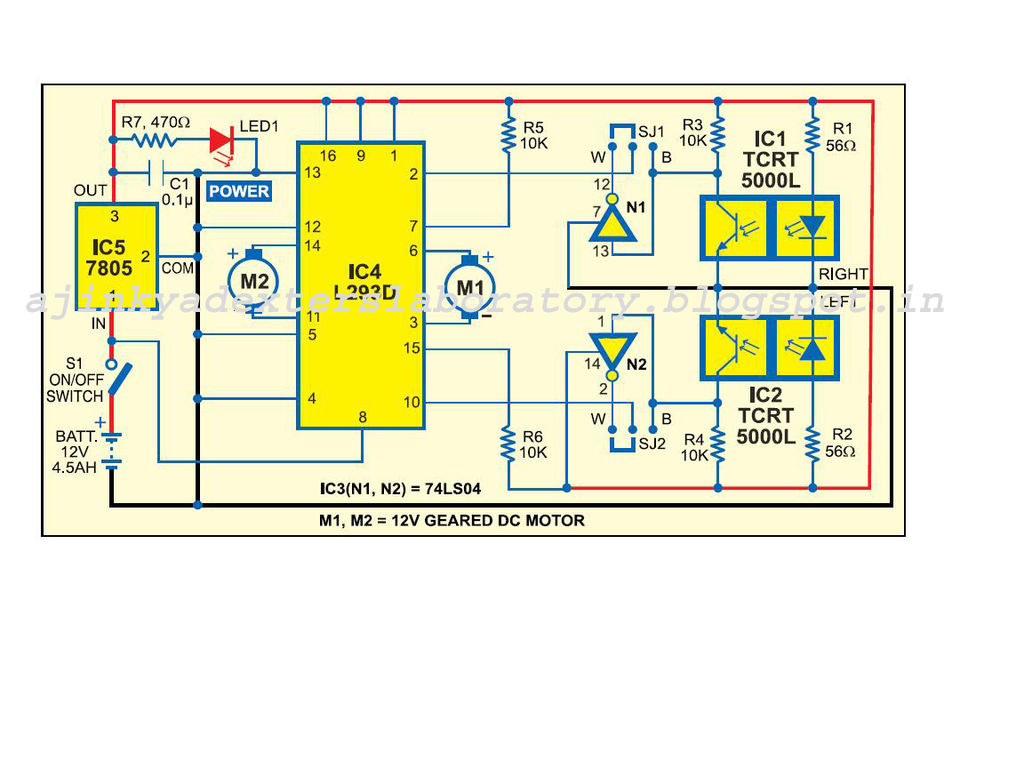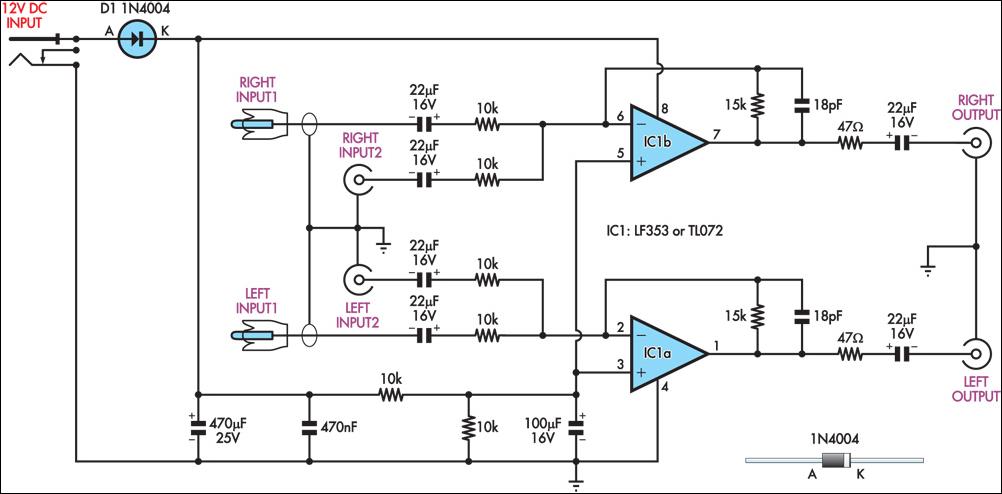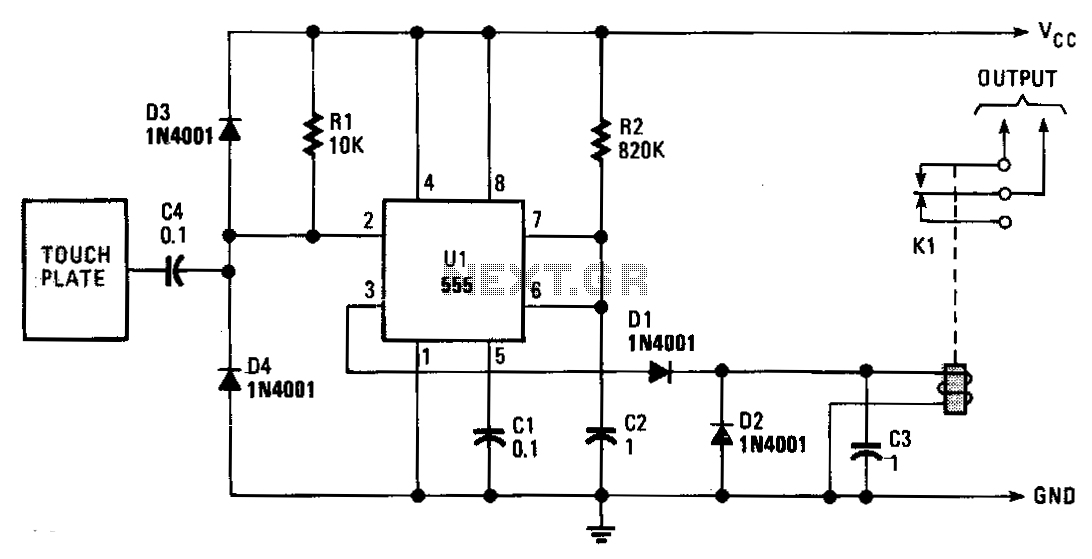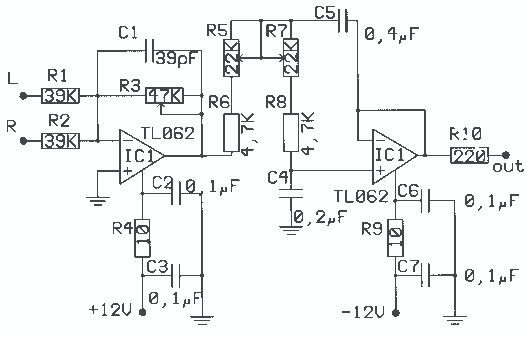
ADSL line filter
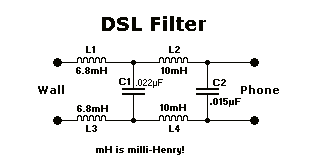
The above diagram is a standard low-pass telephone line filter (L1,C1,L3,C2). L2 and L4 are needed since we're dealing with the 'Tip' and 'Ring' of a phone line which may carry up to 90VAC. Additional info can be found in the ARRL Handbook, etc. For the two capacitors, the higher the voltage the better, but the 400V types are the easiest to obtain.
L1, L2 = 6.8mH, inductor
L3, L4 = 10mH, inductor
C1 = 0.022uF, 250-600V
C2 = 0.015uF, 250-600V
The described circuit is a low-pass filter designed specifically for telephone line applications, utilizing inductors and capacitors to attenuate high-frequency signals while allowing lower frequencies to pass through. The configuration includes two inductors (L1 and L2) with a value of 6.8 mH, and two additional inductors (L3 and L4) rated at 10 mH. This arrangement is crucial for filtering out unwanted noise and interference that may be present on the telephone line.
The filter employs two capacitors, C1 and C2, to complement the inductors. C1 is rated at 0.022 µF with a voltage rating between 250V and 600V, while C2 has a capacitance of 0.015 µF, also with a voltage rating in the same range. The choice of capacitors is significant; higher voltage ratings are preferred for durability and performance, and the 400V types are readily available in the market, making them a practical choice for this application.
In the context of telephone lines, the 'Tip' and 'Ring' conductors are the two wires used to carry the signal, which can experience voltages up to 90VAC. The inclusion of inductors L2 and L4 is essential for managing these voltages effectively, providing necessary isolation and protection for the connected devices.
The performance of this filter has been validated in practical applications, such as those experienced in early BBS (Bulletin Board System) setups, indicating its reliability and effectiveness in real-world scenarios. For further technical details and design considerations, references such as the ARRL Handbook may offer additional insights into similar filtering techniques and implementations.The above diagram is a standard low-pass telephone line filter (L1,C1,L3,C2). L2 and L4 are needed since we're dealing with the 'Tip' and 'Ring' of a phone line which may carry up to 90VAC. I used a similar circuit on 3 phone-lines back in the early 80's when I was running Scottsdale BBS and the filters performed fine.
Additional info can be found in the ARRL Handbook, etc. For the two capacitors, the higher the voltage the better, but the 400V types are the easiest to obtain. L1,L2 = 6.8mH, inductor L3,L4 = 10mH, inductor C1 = 0.022uF, 250-600V C2 = 0.015uF, 250-600V 🔗 External reference
L1, L2 = 6.8mH, inductor
L3, L4 = 10mH, inductor
C1 = 0.022uF, 250-600V
C2 = 0.015uF, 250-600V
The described circuit is a low-pass filter designed specifically for telephone line applications, utilizing inductors and capacitors to attenuate high-frequency signals while allowing lower frequencies to pass through. The configuration includes two inductors (L1 and L2) with a value of 6.8 mH, and two additional inductors (L3 and L4) rated at 10 mH. This arrangement is crucial for filtering out unwanted noise and interference that may be present on the telephone line.
The filter employs two capacitors, C1 and C2, to complement the inductors. C1 is rated at 0.022 µF with a voltage rating between 250V and 600V, while C2 has a capacitance of 0.015 µF, also with a voltage rating in the same range. The choice of capacitors is significant; higher voltage ratings are preferred for durability and performance, and the 400V types are readily available in the market, making them a practical choice for this application.
In the context of telephone lines, the 'Tip' and 'Ring' conductors are the two wires used to carry the signal, which can experience voltages up to 90VAC. The inclusion of inductors L2 and L4 is essential for managing these voltages effectively, providing necessary isolation and protection for the connected devices.
The performance of this filter has been validated in practical applications, such as those experienced in early BBS (Bulletin Board System) setups, indicating its reliability and effectiveness in real-world scenarios. For further technical details and design considerations, references such as the ARRL Handbook may offer additional insights into similar filtering techniques and implementations.The above diagram is a standard low-pass telephone line filter (L1,C1,L3,C2). L2 and L4 are needed since we're dealing with the 'Tip' and 'Ring' of a phone line which may carry up to 90VAC. I used a similar circuit on 3 phone-lines back in the early 80's when I was running Scottsdale BBS and the filters performed fine.
Additional info can be found in the ARRL Handbook, etc. For the two capacitors, the higher the voltage the better, but the 400V types are the easiest to obtain. L1,L2 = 6.8mH, inductor L3,L4 = 10mH, inductor C1 = 0.022uF, 250-600V C2 = 0.015uF, 250-600V 🔗 External reference
